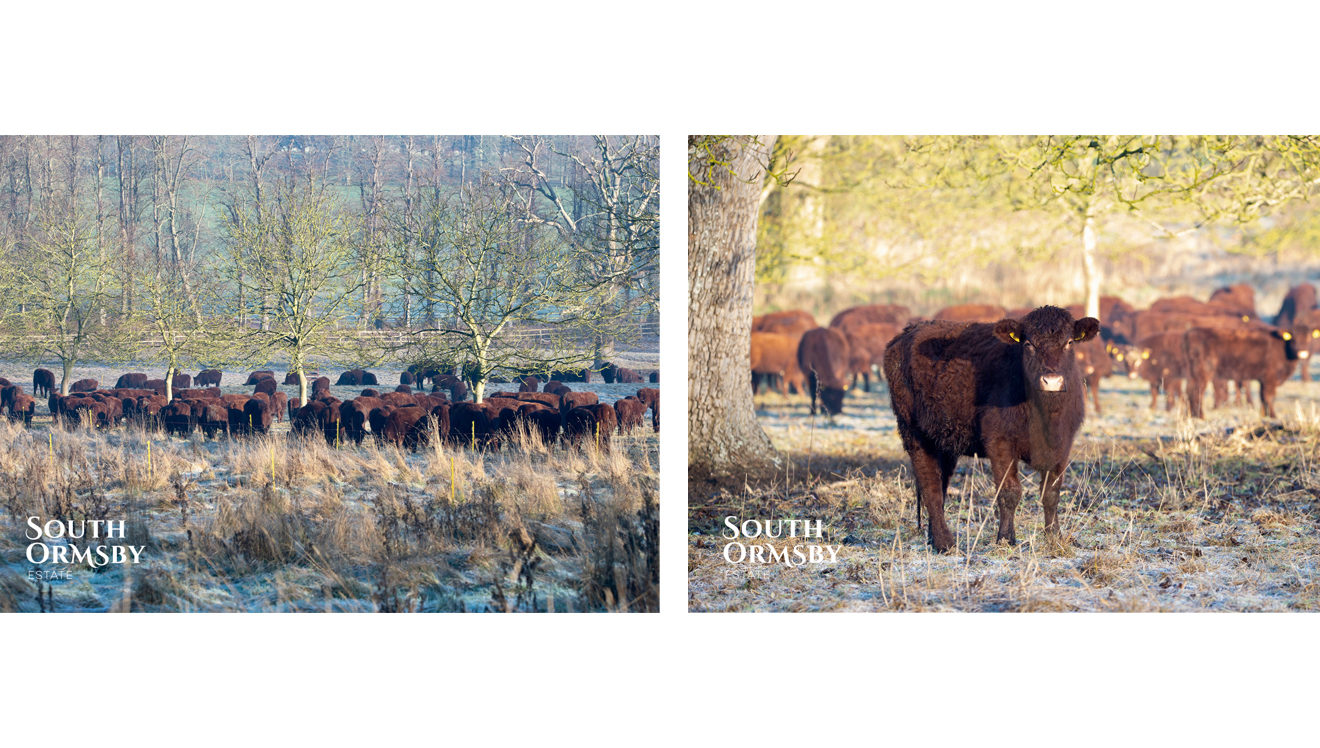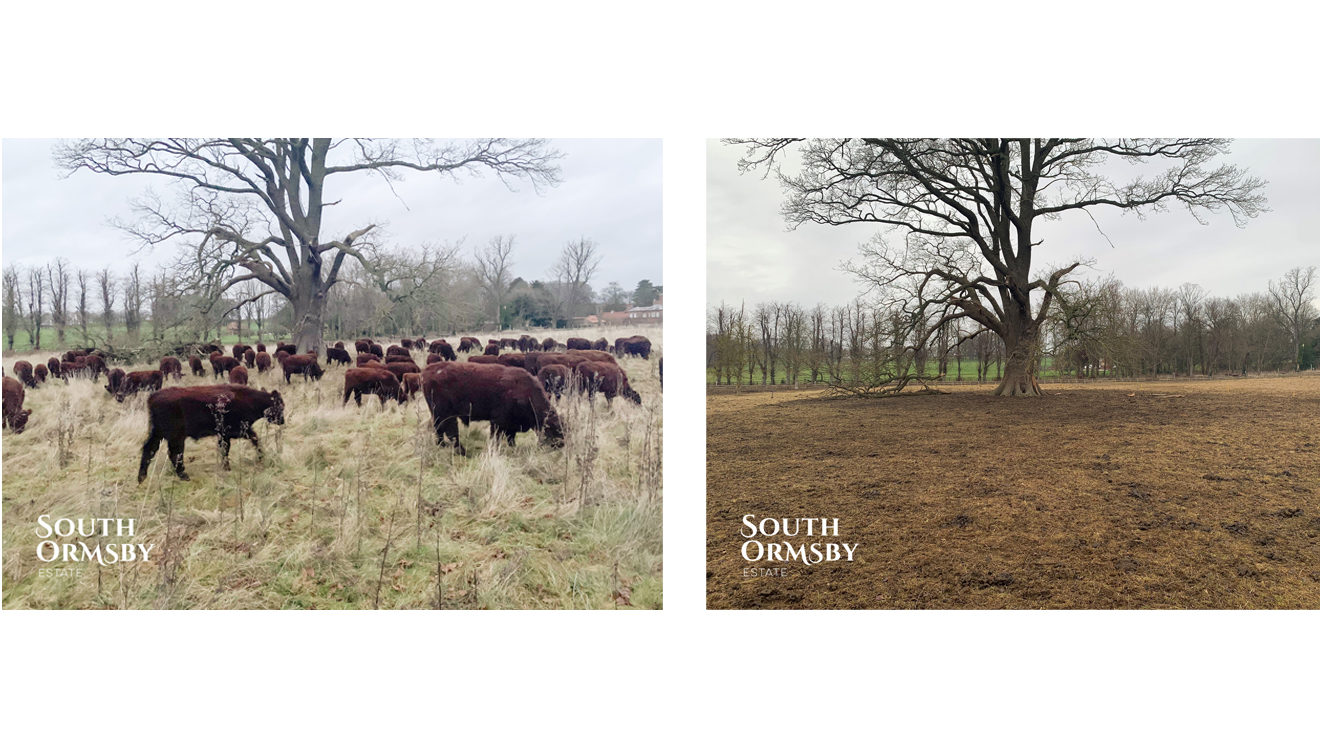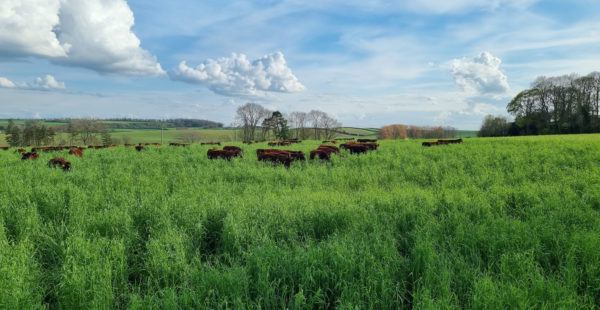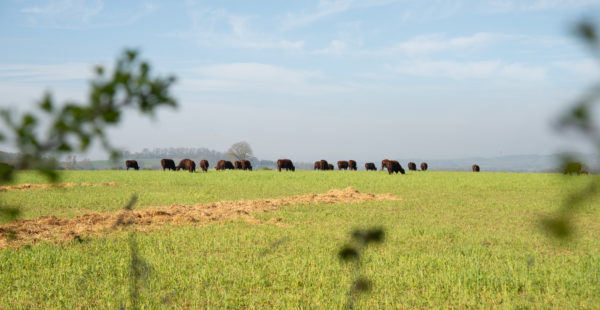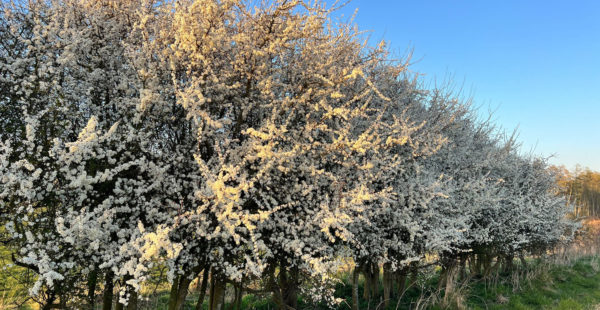Lincoln Red – a Breed for All Seasons
2022 is a big year for sustainable agriculture at South Ormsby Estate. We’re accredited by the Pasture for Life Association and we’re in-conversion to organic status. As stewards of 3,000-acres of the beautiful Lincolnshire Wolds, we’re working hard to put the principles of regenerative and sustainable farming into practice.
For the 2021-22 winter season, we decided to experiment with grazing our Lincoln Red herd on standing hay rather than feeding them cut hay. In previous years, we cut hay in summer, dried it, baled it, wrapped it, transported it, stored it then fed it to the Reds when the cold started to bite. Last year, in preparation for winter, we only baled half the normal amount of hay and left 25 hectares of grass and other herbage un-grazed.
In early December 2021, the Reds were twice daily given access to a strip of un-grazed pasture between 1/4 and 1/8 of a hectare in area. In a matter of hours, the grass in these strips goes from long and thick to non-existent and lots of manure is left behind. The damp ground is thoroughly massaged by the cattle’s hooves, breaking up the thatch, allowing air and water into the topsoil and mixing the top 6cm. Each strip will be grazed three more times by the Reds in 2022 before being closed off in October and left alone for a year.


